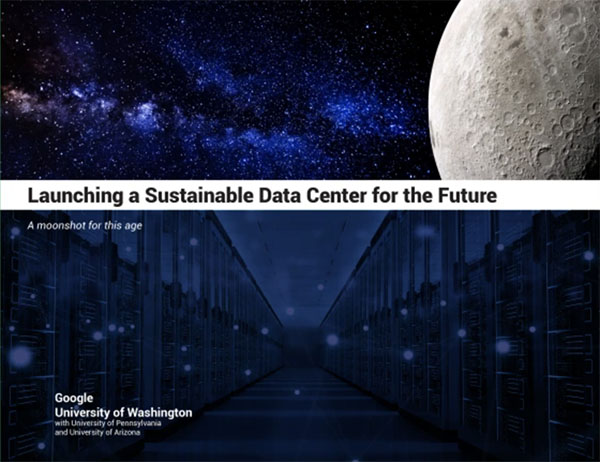Posted on November 4, 2021

Last year, Google teamed up with an interdisciplinary group of students from the University of Washington, the University of Arizona, and the University of Pennsylvania to design more sustainable data centers. The yearlong exploration, supported with funding from Google and expert input from Microsoft, resulted in proposed data centers that use 100% renewable energy.
“It’s a really complex problem,” says architect Julie Kriegh, who led the design studio at the University of Washington along with Hyun Woo “Chris” Lee, a professor in construction management. “We thought of it as a moon shot. So it had to be something where the rules didn’t really apply anymore.”
The designs developed by the student teams of undergraduate and graduate students offer a radical departure from the exurban warehouse structures that most data centers resemble. One team developed a creekside data center with hexagonal facade panels that double as carbon dioxide-sequestering algae bioreactors. Another uses passive cooling techniques in the building’s roof design to counter the heat emitted from the whirring servers within. Another is half buried underground with a looping geothermal system to naturally regulate the temperatures within.
These new material and design approaches are a far cry from the typical data center building. “Data centers are often constructed out of concrete, steel, and roof and wall enclosure panels. That’s a pretty limited palette that uses many highembodied carbonmaterials,” Kriegh says. Based on feedback from Google and Microsoft, the students opted for unconventional building materials like cross-laminated timber and rammed earth.